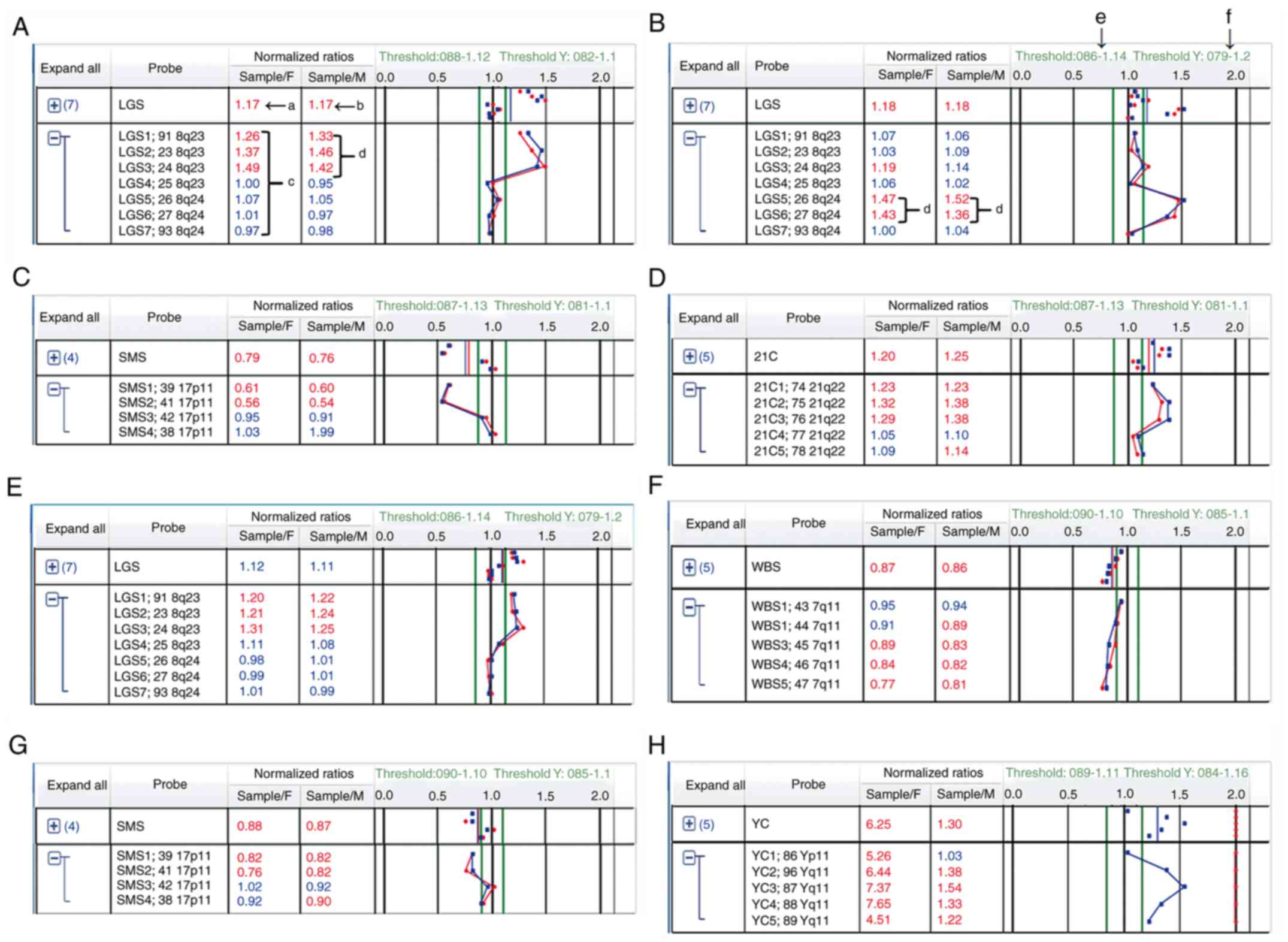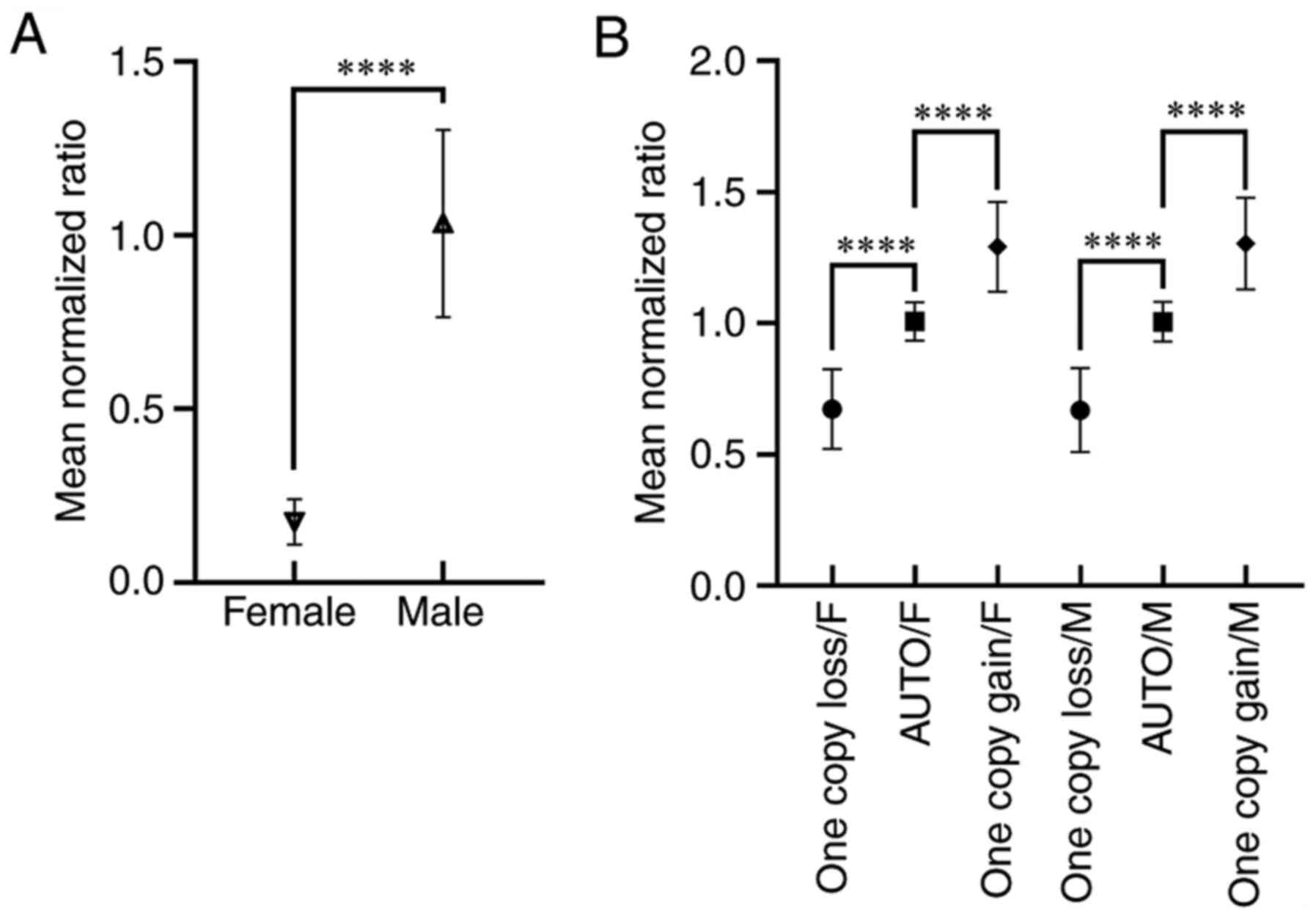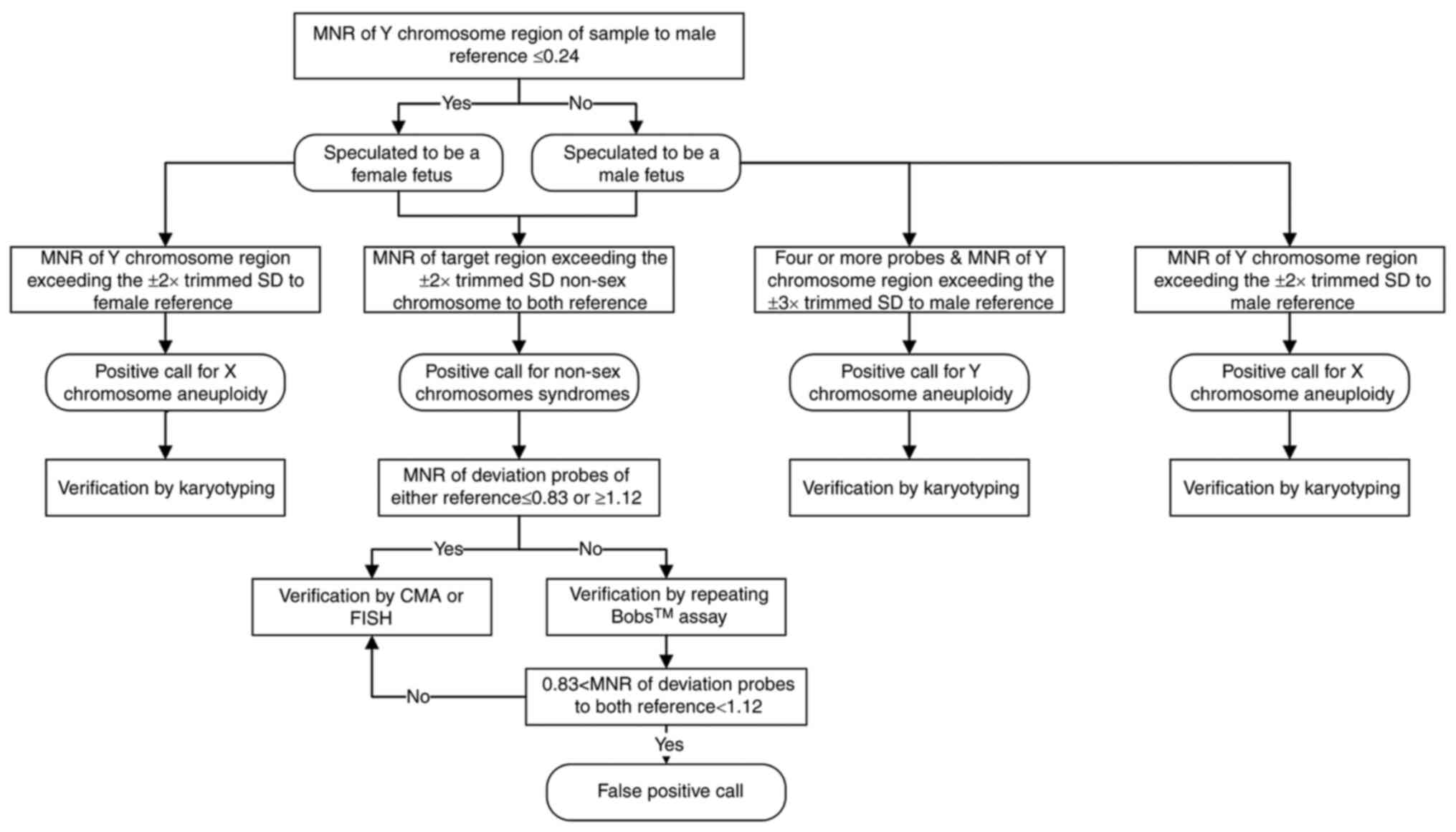|
1
|
Adinolfi M and Sherlock J: Prenatal
detection of chromosome disorders by QF-PCR. Lancet. 358:1030–1031.
2001.PubMed/NCBI View Article : Google Scholar
|
|
2
|
Slater HR, Bruno DL, Ren H, Pertile M,
Schouten JP and Choo KH: Rapid, high throughput prenatal detection
of aneuploidy using a novel quantitative method (MLPA). J Med
Genet. 40:907–912. 2003.PubMed/NCBI View Article : Google Scholar
|
|
3
|
Gross SJ, Bajaj K, Garry D, Klugman S,
Karpel BM, Roe AM, Wagner BJ, Zhan J, Apfelroth SD and
Schreiber-Agus N: Rapid and novel prenatal molecular assay for
detecting aneuploidies and microdeletion syndromes. Prenatal Diagn.
31:259–266. 2011.PubMed/NCBI View
Article : Google Scholar
|
|
4
|
Shaffer LG, Coppinger J, Morton SA,
Alliman S, Burleson J, Traylor R, Walker C, Byerly S, Lamb AN,
Schultz R, et al: The development of a rapid assay for prenatal
testing of common aneuploidies and microdeletion syndromes.
Prenatal Diagn. 31:778–787. 2011.PubMed/NCBI View
Article : Google Scholar
|
|
5
|
Vialard F, Simoni G, Aboura A, De Toffol
S, Molina Gomes D, Marcato L, Serero S, Clement P, Bouhanna P,
Rouleau E, et al: Prenatal BACs-on-Beads: A new technology for
rapid detection of aneuploidies and microdeletions in prenatal
diagnosis. Prenatal Diagn. 31:500–508. 2011.PubMed/NCBI View
Article : Google Scholar
|
|
6
|
Leung TY, Wong KM, Wong HK, Leung KO,
Adler K, Lau TK, Wang CC, Schermer M and Choy KW: 725: A
retrospective study of BACs-on-Beads (BoBs) technology for
identification of chromosome abnormalities compared with QF-PCR and
karyotyping in prenatal diagnosis. Am J Obstet Gynecol. 206
(Suppl)(S322)2012.
|
|
7
|
Piotrowski K, Henkelman M and Zajaczek S:
Will the new molecular karyotyping BACs-on-Beads technique replace
the traditional cytogenetic prenatal diagnostics? Preliminary
reports. Ginekol Pol. 83:284–290. 2012.PubMed/NCBI
|
|
8
|
Vialard F, Simoni G, Gomes DM, Abourra A,
De Toffol S, Bru F, Martinez Romero MC, Nitsch L, Bouhanna P,
Marcato L, et al: Prenatal BACs-on-Beads™: The prospective
experience of five prenatal diagnosis laboratories. Prenatal Diagn.
32:329–335. 2012.PubMed/NCBI View
Article : Google Scholar
|
|
9
|
Cheng YK, Wong C, Wong HK, Leung KO, Kwok
YK, Suen A, Wang CC, Leung TY and Choy KW: The detection of
mosaicism by prenatal BoBs™. Prenatal Diagn. 33:42–49.
2013.PubMed/NCBI View
Article : Google Scholar
|
|
10
|
Choy KW, Kwok YK, Cheng YK, Wong KM, Wong
HK, Leung KO, Suen KW, Adler K, Wang CC, Lau TK, et al: Diagnostic
accuracy of the BACs-on-Beads™ assay versus karyotyping for
prenatal detection of chromosomal abnormalities: A retrospective
consecutive case series. BJOG. 121:1245–1252. 2014.PubMed/NCBI View Article : Google Scholar
|
|
11
|
Choy RK, Chen Y, Sun XF, Kwok YK and Leung
TY: BACs-on-beads: A new robust and rapid detection method for
prenatal diagnosis. Expert Rev Mol Diagn. 14:273–280.
2014.PubMed/NCBI View Article : Google Scholar
|
|
12
|
Garcia-Herrero S, Campos-Galindo I,
Martinez-Conejero JA, Serra V, Olmo I, Lara C, Simón C and Rubio C:
BACs-on-Beads technology: A reliable test for rapid detection of
aneuploidies and microdeletions in prenatal diagnosis. Biomed Res
Int. 2014(590298)2014.PubMed/NCBI View Article : Google Scholar
|
|
13
|
Piotrowski K, Halec W, Wegrzynowski J,
Pietrzyk A, Henkelman M and Zajaczek S: Prenatal diagnosis of
Langer-Giedion Syndrome confirmed by BACs-on-Beads technique.
Ginekol Pol. 85:66–69. 2014.PubMed/NCBI View
Article : Google Scholar
|
|
14
|
Rosenfeld JA, Morton SA, Hummel C,
Sulpizio SG, McDaniel LD, Schultz RA, Torchia BS, Ravnan JB,
Ellison JW and Fisher AJ: Experience using a rapid assay for
aneuploidy and microdeletion/microduplication detection in over
2,900 prenatal specimens. Fetal Diagn Ther. 36:231–241.
2014.PubMed/NCBI View Article : Google Scholar
|
|
15
|
Grati FR, Molina Gomes D, Ferreira JC,
Dupont C, Alesi V, Gouas L, Horelli-Kuitunen N, Choy KW,
García-Herrero S, de la Vega AG, et al: Prevalence of recurrent
pathogenic microdeletions and microduplications in over 9500
pregnancies. Prenatal Diagn. 35:801–809. 2015.PubMed/NCBI View
Article : Google Scholar
|
|
16
|
Fang Y, Wang G, Gu L, Wang J, Suo F, Gu M
and Gou L: Application of karyotype analysis combined with
BACs-on-Beads for prenatal diagnosis. Exp Ther Med. 16:2895–2900.
2018.PubMed/NCBI View Article : Google Scholar
|
|
17
|
Huang H, Zhang M, Wang Y, Lin N, He D,
Chen M, Chen L, Lin Y and Xu L: Application of the BACs-on-Beads™
assay for rapid prenatal detection application of BoBs™ for PND of
aneuploidies and microdeletions. Mol Reprod Dev. 85:146–154.
2018.PubMed/NCBI View Article : Google Scholar
|
|
18
|
Li C, Chen B, Zheng J, Cheng L, Song T,
Guo F, Xu H, Yan F, Xu Y, Li Y and Zhang J: Prenatal diagnosis of
BACs-on-beads assay in 3647 cases of amniotic fluid cells. Reprod
Sci. 26:1005–1012. 2019.PubMed/NCBI View Article : Google Scholar
|
|
19
|
Dang Y, Wan S, Zheng Y, Song T, Li C, Li Y
and Zhang J: The prenatal diagnosis of seven fetuses with 7q11.23
microdeletion or microduplication. Fetal Pediatr Pathol.
39:269–276. 2020.PubMed/NCBI View Article : Google Scholar
|
|
20
|
Miao Z, Liu X, Hu F, Zhang M, Yang P and
Wang L: Combined use of bacterial artificial chromosomes-on-beads
with karyotype detection improves prenatal diagnosis. Mol
Cytogenet. 12(9)2019.PubMed/NCBI View Article : Google Scholar
|
|
21
|
Schouten JP, McElgunn CJ, Waaijer R,
Zwijnenburg D, Diepvens F and Pals G: Relative quantification of 40
nucleic acid sequences by multiplex ligation-dependent probe
amplification. Nucleic Acids Res. 30(e57)2002.PubMed/NCBI View Article : Google Scholar
|
|
22
|
Liao C, Yang X, Li FT, Li J and Li DZ: The
detection of aneuploidy and maternal contamination by QF-PCR in
samples undergoing prenatal diagnosis for thalassemia in Southern
China. Eur J Obstet Gynecol Reprod Biol. 144:149–152.
2009.PubMed/NCBI View Article : Google Scholar
|

















